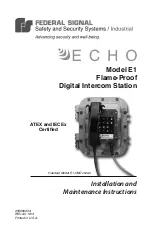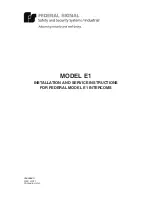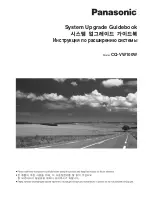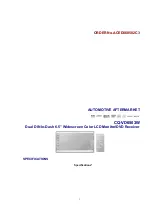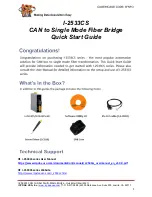
3.0 INSTALLATION
© Presby Environmental, Inc., Design & Installation Manual, September 2020 Edition
21
Connect Rows Using Raised Connections
Raised connections consist of offset adapters, 4 in PVC sewer and drainpipe, and 90° elbows. They enable greater
liquid storage capacity and increase the bacterial surfaces being developed. Raised connections extend 2 in to 4 in
into pipe and are installed on an angle (as shown in the drawing to the right). If the ends are not at least 2 in into
the pipe, they may become dislodged during backfilling. If the ends extend more than 4 in into the pipe, this may
cut off the flow of oxygen to the system. The top of the raised connections should be level with the top of the AES
pipe. All PVC joints should be glued or mechanically fastened.
Raised Straight Connection
A raised straight connection is a PVC sewer & drain
pipe configuration which is used to connect AES rows
that are placed end to end along the same contour.
Raised straight connections extend 2 in to 4 in into
pipe and are installed on an angle (as shown in the
drawings to the right). All PVC joints should be glued
or mechanically fastened.
Backfilling Rows
1.
Spread system sand between the rows.
2.
Confirm pipe rows are positioned with Bio-Accelerator along the bottom (sewn seam up).
3.
Straddle each row of pipe and walk heel-to-toe its entire length, ensuring that system sand fills all void
spaces beneath the AES pipe.
4.
Finish spreading system sand to the top of the rows and leave them exposed for inspection purposes.
5.
Confirm that all rows of pipe are level to within 1 in end-to-end.
6.
After inspection (if required) proceed to backfilling and final grading.
Backfilling and Final Grading
1.
Spread system sand to a minimum of 3 in over the pipe and a minimum of 6 in on all four sides of the bed
beyond the AES pipes.
2.
Spread a minimum of 4 in of suitable earth cover (topsoil or loam) free of organics, stones over 4 in and
building debris, having a texture similar to the soil at the site, without causing compaction.
3.
To prevent erosion, soil cover above the system shall be planted with native, shallow-rooted vegetation
such as grass, wildflowers and certain perennials or ground covers. No trees or shrubs should be located
within 10 ft of the system perimeter to prevent roots from growing into and damaging the system.
Fill Extensions Requirements
All systems with any portion of the system sand bed above original grade require 6 in fill extensions on each side
beyond the outside edge of all AES pipes and then tapering to meet existing grade at a maximum slope of 3:1.
There must be a minimum of 12 in of cover material over the ends of all system sand extensions (if present).





















